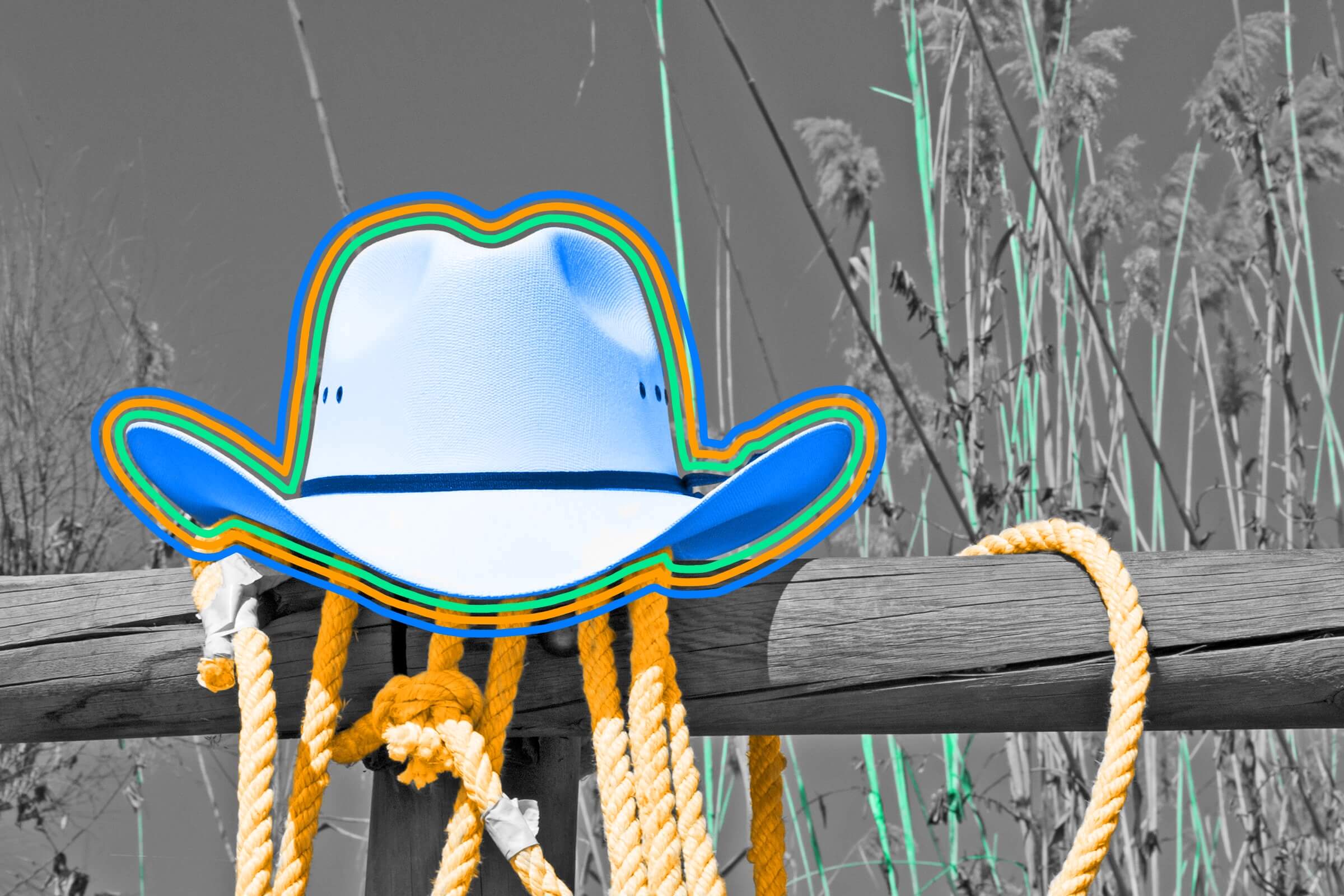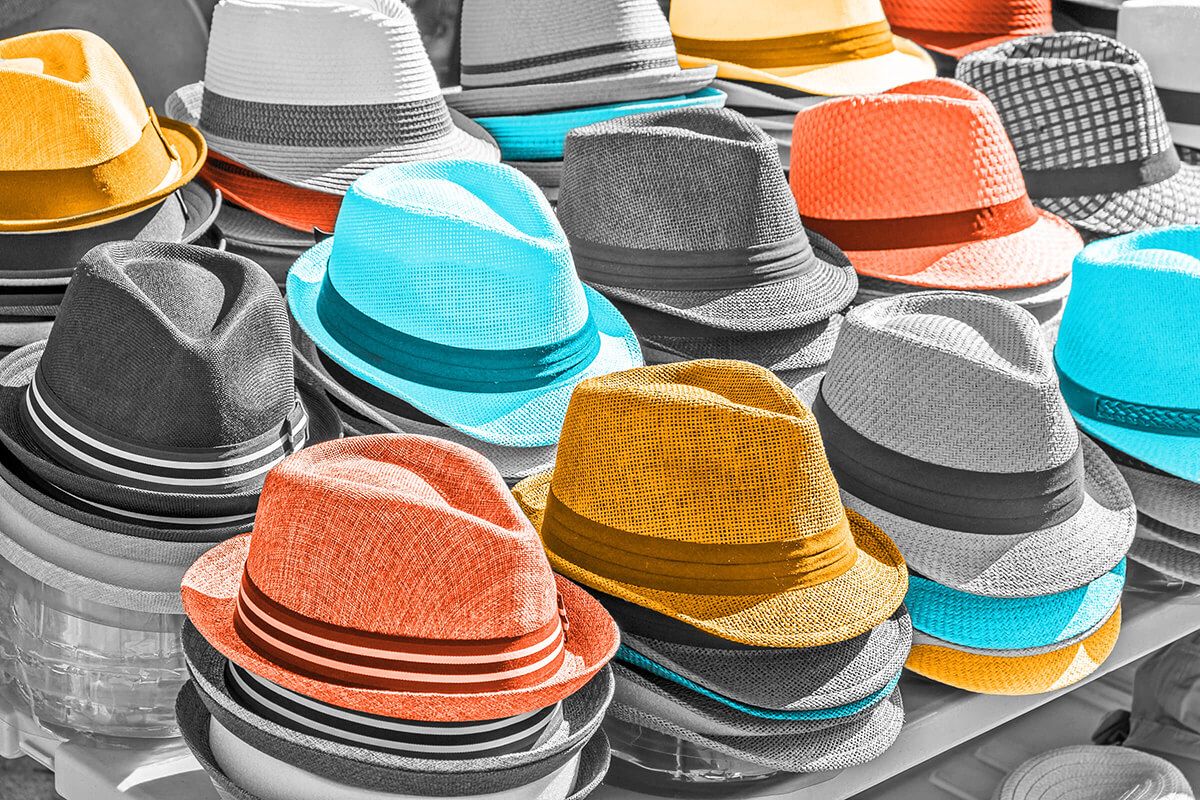
A 10-gallon hat actually only holds three-quarters of a gallon.
It might sound like a trick question: How many gallons of water does a 10-gallon hat hold? Turns out, not even one. The famous piece of Western wear can only contain about 3 quarts of water — that’s a mere three-quarters of a gallon. (Hatmakers advise against double-checking this figure at home, since complete saturation isn’t kind to felt and fur hats.) There’s no clear origin to the misleading 10-gallon name, but some linguists believe the term stems from cross-cultural confusion. One theory holds that American cowboys picked up the name while working alongside Spanish-speaking cattlemen, many of whom wore wide-brimmed hats with decorative galóns (aka braids). The most elaborate of these featured band upon band of detailing — as many as 10 hatbands. Another theory suggests that “10-gallon” was an anglicized version of “tan galán,” a Spanish phrase meaning “very handsome,” used to describe cowboys as they rode off into the sunset and the like.
Western films of the early 20th century primarily outfitted actors in 10-gallon hats, though those depictions weren’t historically accurate when it came to reenacting the Old West. With their large brim and tall crowns, 10-gallon hats can easily catch the wind or attract attention, making them an impractical choice for ranchers and outlaws alike. Derby (aka bowler) hats were actually the most commonly worn men’s hat until the mid-to-late 1800s, after hatmaker John Batterson Stetson released his first cowboy hat, called the “Boss of the Plains.” His version was inspired by the original 10-gallons but could withstand the elements. It became popular on ranches, movie sets, and even at the White House.
Before John Wayne and Clint Eastwood became Hollywood superstars thanks to their roles in Western films, another on-screen cowboy dominated the genre: Tom Mix. The Pennsylvania-born actor appeared in his first film in 1909, beginning a career that would be bedazzled by iconic Western wear, including an oversized Stetson 10-gallon hat. Mix was also known for performing his own stunts, a feat he was able to accomplish thanks to his experience as a cowhand and a member of the Texas Rangers. He would go on to star in more than 300 screenplays, the majority of them silent films, and by 1928 was Hollywood’s highest-paid actor. Mix’s career dwindled as “talkie” pictures rolled around, but he continued his showbiz career with a second act as a rodeo and circus star until his death in 1940.

